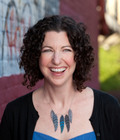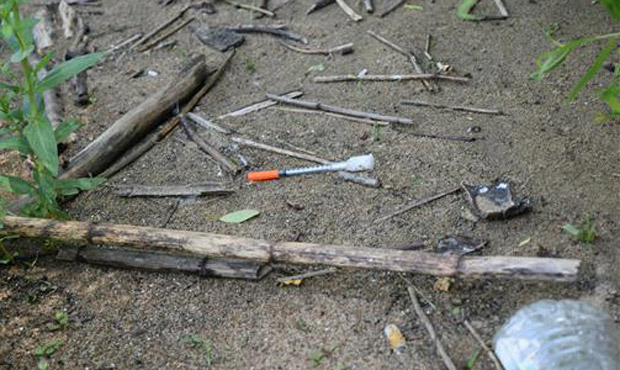Rachel Belle
The magical mysteries of breast milk, revealed
There is nothing more basic or human than a mother breastfeeding her baby. But perhaps because of the thousands of parenting books and magazine articles, delivering conflicting ideas on breastfeeding, mothers don’t always completely understand why nursing is so important.
About 10 months ago, Seattle’s Angela Garbes gave birth to her daughter, Noli. Around the same time, she was offered a full time job writing about food for the Seattle alternative weekly paper, The Stranger.
“I then started thinking about food professionally all the time,” Garbes said, sitting at her dining room table, while her daughter slept upstairs. “On top of that, I was producing food all the time because I had decided to breastfeed. I received a lot of support and I felt like I was getting good information, but it just didn’t feel like enough. Okay, breast milk is best for a child. What does that really mean? I wanted to do this deep dive into, nutritionally, what does that look like.”
So she got in touch with Dr. Katie Hinde, a biologist, certificated lactation education counselor and associate professor at Arizona State University. Angela took that knowledge and wrote an article that has become the most read in The Stranger’s 24 year history. Turns out a lot of people are interested in breast milk.
So first up, here’s how the milk is made:
“Studies have shown that women mobilize fat from the gluteal-femoral region first, which is the booty. So that would be the first place the fat comes from. You turn those fat stores, which is all energy that is just hanging out on your ass,” Garbes laughs. “You melt that, basically, and turn it into this liquid that you feed your child with.”
Mother’s milk contains carbohydrates, fats, vitamins, potassium, and more, making it a perfect food, and the only thing a baby needs to eat or drink for at least the first six months of life. And the milk is pretty magical. The milk’s makeup changes by the minute, morphing into exactly what the baby needs at that particular feeding. Everything scientists know about physiology indicates that a baby’s saliva going into its mothers nipple is one of the ways that breast milk adjusts its composition.
“So, essentially, when an infant suckles at its mother’s breast, a vacuum is created. And within that vacuum the baby’s saliva is sucked back into the mother’s nipple and there her mammary glands have receptors that read and interpret that saliva,” Garbes explains. “So if a baby is sick, and there are pathogens in that saliva, her mammary glands interpret that and compel her body to produce antibodies to fight that particular infection. So the mother’s body produces that and it goes into the breast milk and then the breast milk goes back out of the nipple and into the baby’s mouth and into the baby’s system where it targets that infection.”
Dr. Hinde told Garbes that breast milk can even help a baby learn the difference between day and night.
“You know, we’re always told when we pump milk to label the date that it was pumped. It’s best to use within the next six days. But [Dr. Hinde] says that she recommends to her clients that they label it with the time,” Garbes said. “That’s because at different hours of the day you have different hormones circulating in your body and those show up in breast milk. Things like Tryptophan or melatonin, the things that make you go to sleep at night. Those are going to be present in evening milk.”
“And she mentioned studies that have been done where people in nursing homes have been given cow’s milk,” she said. “And milk that was given to these older people, from cows that had been milked at night, helped them sleep better than the milk that had been pumped during the day.”
So why aren’t these fascinating facts about women’s bodies better known? Garbes has her own theory.
“Because, you know, we have things like periods and milk and fluid that leaks out of us and we give birth pushing a baby out of our vagina. People think that’s gross and people think that’s scary,” Garbes said. “And people think that’s so mysterious and natural and there’s so much stuff about women that we keep over to the side. I think it’s incredibly powerful and intimidating. But the easiest thing to do is to devalue that and say that it’s gross. It’s a very American, puritanical kind of thing.”
To be clear, Garbes’ article isn’t trying to convince mothers to breastfeed, or make them feel bad if they’re not breast feeding.
“If you choose to breastfeed or you choose not to breastfeed; if you are physically unable to breastfeed or if breastfeeding just does not work with your life and your schedule, people make you feel guilty,” Garbes said. “People can make you feel ashamed of that. I just think that that’s terrible. I don’t think women should be made to feel that way. What I think women should have is information about all the choices that are available to them so that they can choose what is best for themselves.”






































Comments